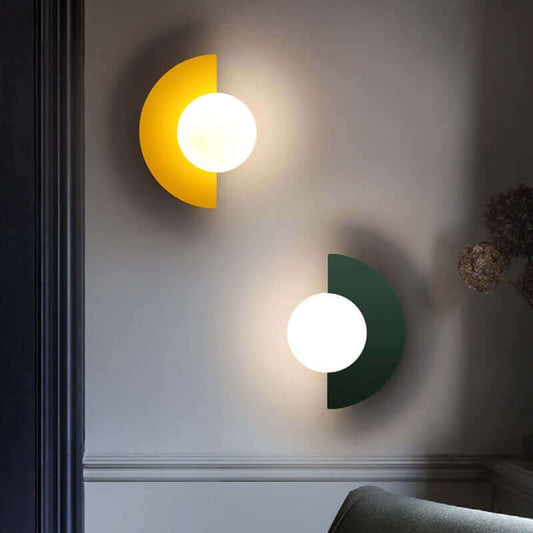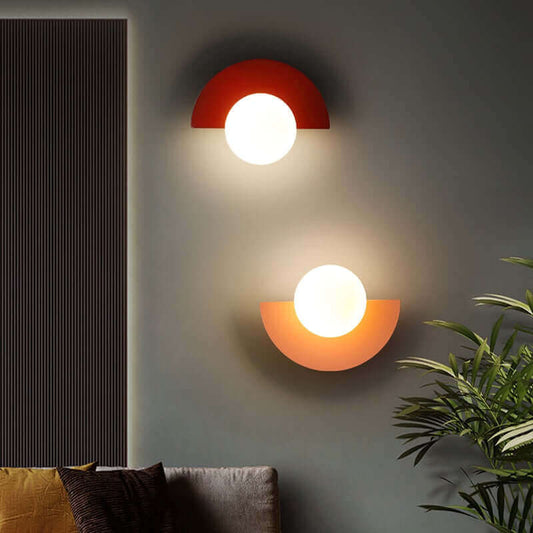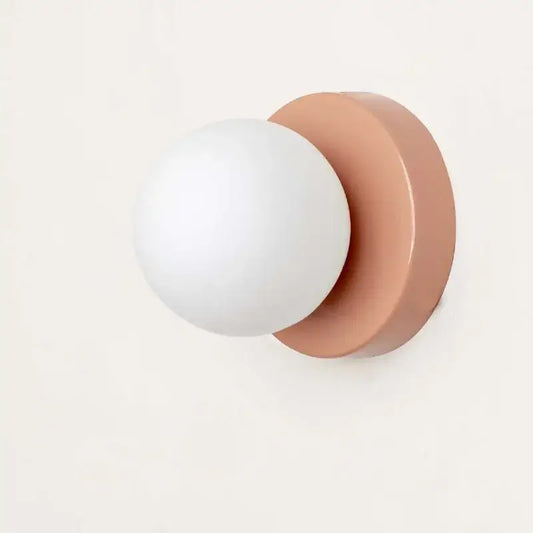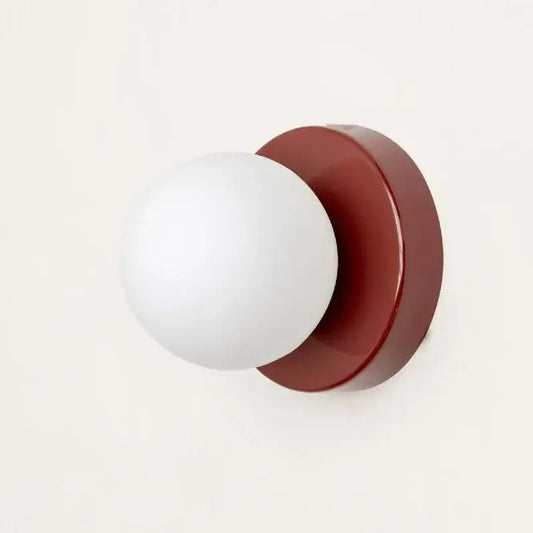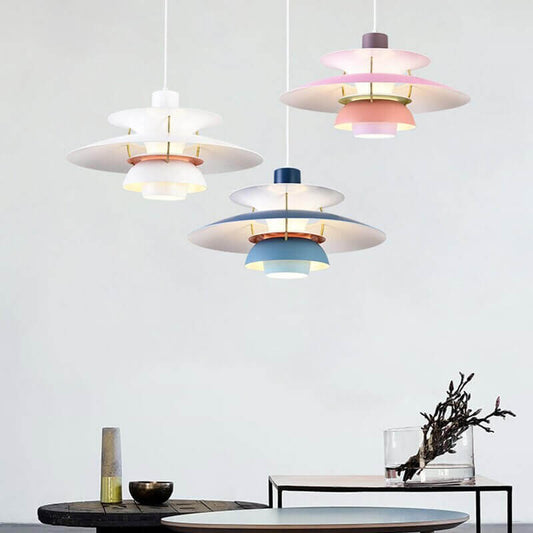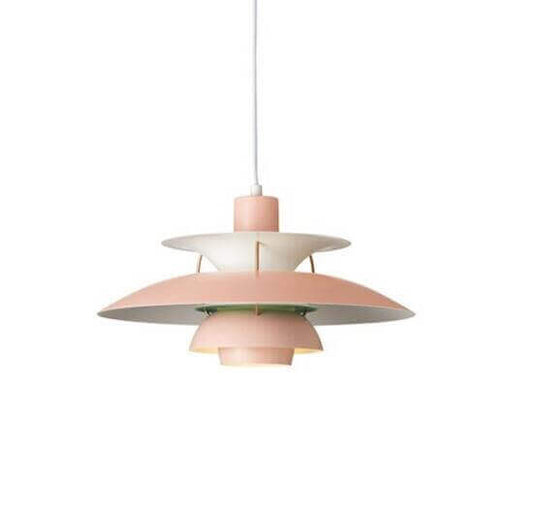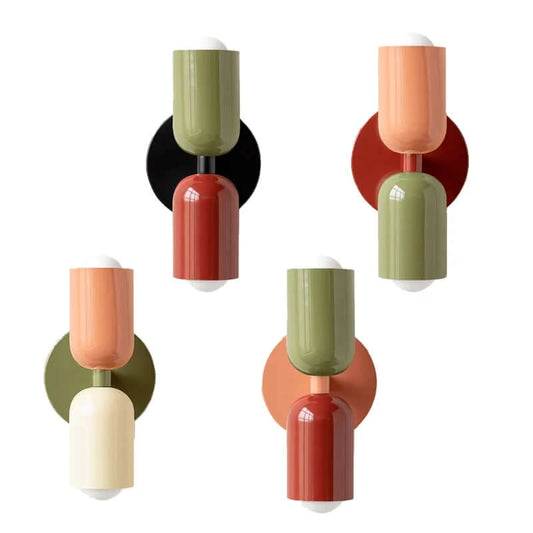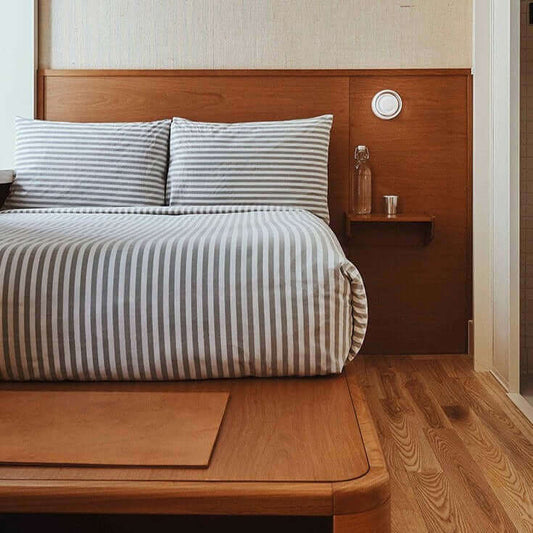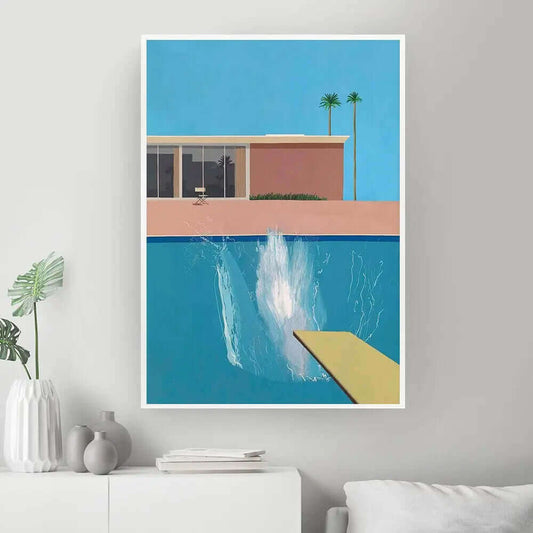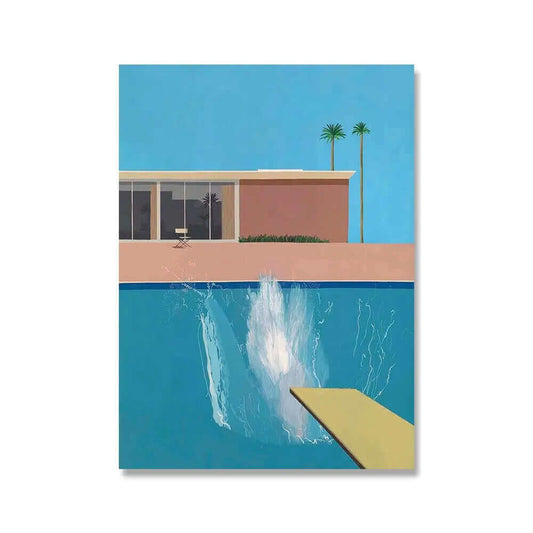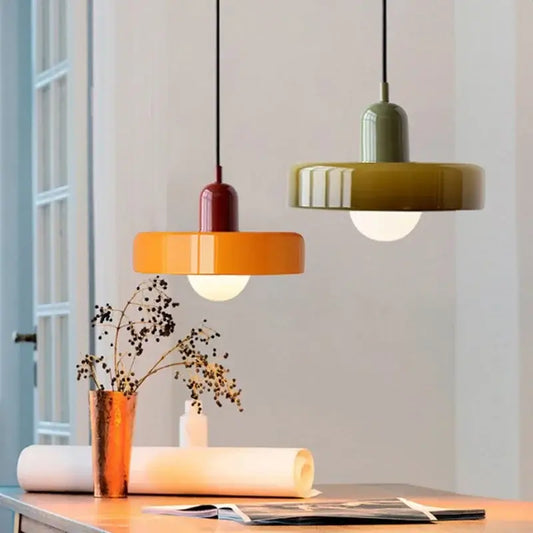Welcome to this comprehensive lesson on "The Modern Revolution: Form Follows Function." In the 20th century, architecture and interior design experienced a radical shift with the emergence of the modernist movement. This transformative era championed the principle of "form follows function," a concept that redefined design aesthetics and laid the foundation for contemporary architectural and interior styles. Throughout this lesson, we will delve into the key aspects of modernism, exploring how architects embraced simplicity, clean lines, and industrial materials, while interior designers adopted open-plan layouts, uncluttered spaces, and an emphasis on natural light, reflecting the minimalist aesthetics of modernist architecture.
I. The Rise of Modernism: Historical Context
The birth of the modernist movement in the late 19th and early 20th centuries was a response to the rapidly changing world brought about by the Industrial Revolution and technological advancements. This seismic shift in society's values and priorities led to a reimagining of architecture and interior design, embracing new philosophies that departed from the ornate and historical styles of the past.
1. The Industrial Revolution: Catalyst for Change The Industrial Revolution, which gained momentum in the late 18th century, marked a turning point in human history. It brought about significant advancements in manufacturing, transportation, and communication, fundamentally altering the way people lived and worked. Mass production techniques and the advent of steam power revolutionized the building industry, enabling the construction of taller and larger structures. This newfound efficiency challenged traditional building methods and materials, spurring architects to explore new possibilities.
2. Technological Advancements and Material Innovation The modernist movement was greatly influenced by technological innovations and material discoveries. The development of new materials, such as steel, glass, and reinforced concrete, revolutionized architectural possibilities. Architects began to embrace these industrial materials for their strength, durability, and flexibility, allowing for the creation of lighter and more open spaces. The use of large glass windows and facades blurred the boundaries between interior and exterior, inviting natural light to flood interior spaces.
3. Famous Contributors to Modernism
- Frank Lloyd Wright (1867-1959): An American architect known for his organic architecture and emphasis on harmony with nature. His iconic works, such as Fallingwater and the Guggenheim Museum, exemplified modernist principles.
- Le Corbusier (1887-1965): A Swiss-French architect who championed the five points of modern architecture, including pilotis (elevated supports) and roof gardens. His Villa Savoye and the Unité d'Habitation showcased his modernist vision.
- Walter Gropius (1883-1969): The founder of the Bauhaus school, which became a key hub for modernist design and education. Gropius emphasized the unity of art, craft, and technology in architecture.
- Ludwig Mies van der Rohe (1886-1969): A German-American architect known for the phrase "less is more." His minimalist approach is evident in iconic structures like the Barcelona Pavilion and the Farnsworth House.
4. Countries with the Most Influence The modernist movement spread across the globe, but certain countries played pivotal roles in its development and dissemination:
- Germany: The Bauhaus school in Germany became a hotbed of modernist ideas, emphasizing the integration of art and industry.
- France: Paris was a center of modernist thought, with influential architects like Le Corbusier and Auguste Perret making significant contributions.
- United States: American architects, including Frank Lloyd Wright and Richard Neutra, embraced modernist principles, leaving a lasting impact on American architecture.
- Netherlands: The Dutch De Stijl movement, led by architects like Gerrit Rietveld, emphasized geometric abstraction and simplicity in design.
References:
- Designing the Modern: Profiles of Modernist Designers, Milton Schaff
- Bauhaus, Frank Whitford
- 50 Lessons to Learn from Frank Lloyd Wright, Aaron Betsky
- Le Corbusier: Ideas and Forms by William J.R. Curtis
- Mies van der Rohe: Space - Material - Detail, Edgar Stach
As we explore the historical context of the modernist movement, we begin to grasp the transformative forces that shaped its philosophy. The Industrial Revolution's impact on manufacturing and technology, coupled with the ingenuity of pioneering architects and designers, set the stage for the rise of modernism. By embracing new materials, streamlining aesthetics, and embracing functionality, the modernist movement would revolutionize architecture and interior design, leaving an indelible mark on the world of modern living.
II. "Form Follows Function": The Guiding Principle
-
"Form follows function" is a fundamental principle of modernism that originated in the late 19th and early 20th centuries. It is often associated with architecture and design, but its influence extends to various fields, including industrial design, graphic design, and product design. This principle suggests that the form or design of an object should be primarily determined by its intended function or purpose.
The phrase "form follows function" is often attributed to the American architect Louis Sullivan, who used it in an article titled "The Tall Office Building Artistically Considered," published in 1896. He advocated for a break from traditional architectural styles and emphasized that buildings should reflect their modern industrial purpose, leading to designs that are simple, efficient, and devoid of unnecessary ornamentation.
The core idea behind this principle is that design should be driven by practical considerations and the needs of users or occupants, rather than being influenced by superficial or decorative elements. The purpose is to achieve functionality and usability without unnecessary embellishment. This approach was in stark contrast to the prevailing ornate styles of the 19th century, such as the Victorian era, which often prioritized elaborate decorations and aesthetics over practicality.
The concept of "form follows function" had a profound impact on design thinking, both in architecture and other design disciplines:
-
Simplification: The principle encouraged designers to eliminate unnecessary elements and focus on the essential aspects of a design. This led to clean, uncluttered, and minimalist aesthetics that emphasized clarity and efficiency.
-
Integration of Technology: With the rise of industrialization and technological advancements, modernist designers embraced new materials and construction techniques. This allowed for the creation of more streamlined and efficient designs that matched the capabilities of contemporary materials and manufacturing processes.
-
Human-Centered Design: By prioritizing the user's needs and experiences, designers started to create more user-friendly and ergonomic products and spaces. Functionality became central to the design process, enhancing the overall usability and practicality of designs.
-
Influence on Architecture: Modernist architects like Walter Gropius, Le Corbusier, and Mies van der Rohe embraced the principle of "form follows function" and designed iconic buildings such as the Bauhaus school, the Villa Savoye, and the Barcelona Pavilion. These structures were characterized by simplicity, openness, and a focus on functionality.
-
Impact on Product Design: The principle extended to product design, influencing the development of everyday objects like furniture, appliances, and automobiles. Utilitarian designs with sleek lines and efficient features became increasingly popular.
-
Influence on Graphic Design: In graphic design, the principle emphasized clarity of communication and visual hierarchy. Designs were stripped of unnecessary decorative elements, making information more accessible and understandable.
In summary, "form follows function" transformed design thinking by emphasizing the importance of functionality, efficiency, and user-centricity over ornamental extravagance. It laid the foundation for modernist design movements and continues to influence contemporary design practices, where the user's needs and the intended purpose of a design remain paramount considerations.
-
III. Modernist Architecture: Simplicity and Clean Lines
Modernist architecture emerged in the early 20th century as a response to the rapid changes brought about by industrialization and urbanization. It sought to break away from the ornate and historical architectural styles of the past, favoring simplicity, functionality, and a focus on the present and future. One of the defining characteristics of modernist architecture is its emphasis on clean lines, geometric forms, and a rejection of ornamentation. Let's explore these key features and some iconic modernist architectural works that have had a significant impact on the global design landscape.
-
Clean Lines: Modernist architecture is characterized by its clean and crisp lines. Buildings are often designed with straight edges and sharp angles, creating a sense of order and simplicity. This simplicity of form is intended to highlight the structure's essential elements and the beauty of the materials used.
-
Geometric Forms: Modernist architects often employed geometric shapes such as squares, rectangles, circles, and triangles to create a visually striking and harmonious design. These forms are used both in the overall massing of the building and in the details of its facades and interiors.
-
Rejection of Ornamentation: Traditional architectural styles often featured intricate ornamentation and decorative elements. Modernist architects deliberately rejected these embellishments, aiming for a more honest and functional expression of the building's purpose. The motto "form follows function" encapsulates this idea.
-
Use of New Materials and Technology: Modernist architects embraced new materials and construction techniques made possible by industrial advancements. Steel, concrete, and glass were frequently used to create structures with large, open spaces and expansive windows, allowing for more natural light and a sense of transparency.
-
Open Floor Plans: Modernist architecture often incorporated open floor plans, minimizing interior walls and allowing for flexible and multifunctional spaces. This openness aimed to adapt to modern living needs and enhance the sense of spaciousness.
-
Integration with Surroundings: While modernist architecture sought to be a departure from traditional styles, it also emphasized the integration of buildings with their surroundings and natural environments. Architects considered factors such as climate, topography, and the flow of people to create designs that harmonized with their context.
Iconic Modernist Architectural Works and Their Impact:
-
Bauhaus School (Walter Gropius): Founded in 1919 in Germany, the Bauhaus was a pioneering school that brought together art, design, and architecture under one roof. It advocated for a unified approach to design, emphasizing simplicity, functionality, and craftsmanship. Many of its teachings and principles have influenced modernist architecture worldwide.
-
Villa Savoye (Le Corbusier): Completed in 1931 in France, Villa Savoye is a masterpiece of modernist architecture. Its design is a representation of Le Corbusier's "Five Points of Architecture," which include pilotis (elevated supports), a roof garden, an open floor plan, horizontal windows, and a free façade. The villa exemplifies the modernist principles of clean lines, geometric forms, and functionality.
-
Fallingwater (Frank Lloyd Wright): Built in 1935 in Pennsylvania, USA, Fallingwater is a prime example of organic modernism. It seamlessly integrates with its natural surroundings, featuring cantilevered balconies and terraces that seem to float above a waterfall. Wright's design showcases the marriage of nature and modern architecture.
-
Barcelona Pavilion (Mies van der Rohe): Designed for the 1929 International Exposition in Barcelona, Spain, the Barcelona Pavilion is a celebrated work of modernist architecture. It features a simple and elegant design with clean lines, the use of rich materials, and an open plan that blurs the boundaries between indoor and outdoor spaces.
-
Sydney Opera House (Jørn Utzon): Completed in 1973 in Australia, the Sydney Opera House is a globally recognized architectural icon. Its unique sail-like shells and sweeping curves are an embodiment of modernist design principles, drawing inspiration from the surrounding harbor and landscape.
These iconic works and the wider modernist movement have had a lasting impact on the global design landscape. Modernist architecture's emphasis on simplicity, clean lines, and functionality continues to influence contemporary architectural design, with many architects today incorporating modernist principles into their projects to create buildings that are not only aesthetically pleasing but also responsive to the needs of the people who use them.
IV. Industrial Materials: Embracing the Machine Age
In the early 20th century, the emergence of modernist architecture coincided with the rise of the Machine Age and industrialization. This era brought about significant advancements in manufacturing and construction technologies, which influenced architectural design. Modernist architects embraced these industrial materials, such as steel, glass, and concrete, to create buildings with minimalist and sleek aesthetics. Let's delve into the use of these materials and their contributions to the modernist architectural style.
- Steel: Steel became a revolutionary material in modernist architecture due to its strength, flexibility, and efficiency in construction. Its introduction allowed architects to design buildings with larger spans and heights, leading to the creation of skyscrapers and structures with open floor plans.
The use of steel in building frames enabled the elimination of load-bearing walls, allowing for more extensive use of glass as an external envelope. This innovation, known as the curtain wall system, became prominent in modernist skyscrapers, where the entire facade could be composed of glass panels, promoting transparency and a seamless connection between indoor and outdoor spaces.
The combination of steel and glass gave rise to iconic buildings with clean lines and a sense of lightness, exemplified by structures like the Seagram Building in New York City, designed by Ludwig Mies van der Rohe and Philip Johnson.
- Glass: The advent of large sheets of plate glass facilitated the integration of transparency and natural light into modernist buildings. Architects embraced the idea of dissolving the boundaries between interior and exterior spaces, creating a sense of continuity with the surrounding environment.
Glass allowed for unobstructed views and a sense of openness, promoting a connection with nature and the outside world. This transparency also served the modernist philosophy of honesty in design, revealing the structural systems and functional aspects of the building.
The Farnsworth House, another masterpiece by Mies van der Rohe, exemplifies the use of glass in modernist architecture. This single-story residence features floor-to-ceiling glass walls, providing an intimate relationship with the surrounding landscape.
- Concrete: Reinforced concrete became a favored material in modernist architecture due to its durability, versatility, and ability to be molded into various shapes. It allowed for the creation of sleek, sculptural forms that were previously unattainable with traditional construction materials.
Modernist architects often exposed concrete surfaces, showcasing the material's raw and honest aesthetic. This approach, known as "béton brut" or "exposed concrete," became a hallmark of modernist design, as seen in works like Le Corbusier's Unité d'Habitation in Marseille, France.
Concrete also facilitated the creation of cantilevered structures, where portions of a building could extend beyond its supports. This innovative use of concrete contributed to the striking visual appeal of modernist buildings and their emphasis on form and function.
Overall, the use of industrial materials like steel, glass, and concrete in modernist architecture played a crucial role in shaping the minimalist and sleek aesthetics of the movement. These materials offered architects unprecedented design opportunities, allowing for open and flexible spaces, abundant natural light, and structures that blended harmoniously with their surroundings. The resulting modernist buildings continue to be celebrated for their innovative use of materials and their enduring impact on the field of architecture.
V. Modern Interiors: Open-Plan Layouts
Open-plan layouts in interior design refer to the design approach where multiple functional spaces within a building are combined into one cohesive and open space, typically without the use of many dividing walls or partitions. This concept gained popularity during the modernist movement and continues to be widely utilized in contemporary interior design. Let's delve into how open-plan layouts revolutionized interior design and explore the benefits they offer.
-
Breaking Down Barriers: Open-plan layouts challenged the traditional compartmentalization of interior spaces, which was common in older architectural styles. By removing or minimizing walls, architects and designers were able to create more fluid and interconnected spaces. This approach embraced the idea of flexibility, enabling occupants to adapt the area to their changing needs.
-
Enhanced Functionality: Open-plan layouts promote a more efficient and functional use of space. Combining multiple rooms, such as the living room, dining area, and kitchen, into one open space allows for a seamless flow between different activities. This can be particularly advantageous in smaller homes or apartments, where every square foot counts.
-
Abundance of Natural Light: With fewer walls obstructing the flow of light, open-plan layouts often result in an increased inflow of natural light throughout the space. This not only enhances the overall ambiance but also contributes to energy efficiency, reducing the need for artificial lighting during the day.
-
Social Interaction: Open-plan layouts encourage social interaction and connectivity among family members or residents. Whether it's hosting gatherings, cooking while entertaining guests, or simply being able to see and communicate with others from various parts of the space, these layouts foster a sense of togetherness and communal living.
-
Versatility in Design: The absence of rigid walls allows for more creative and flexible interior design solutions. Furniture placement and arrangement become more fluid, giving homeowners or occupants the freedom to rearrange their living space based on their preferences or changing lifestyle needs.
-
Perception of Space: Open-plan layouts can make a space feel more expansive and spacious, even in cases where the actual square footage is limited. By eliminating visual barriers and allowing for unobstructed sightlines, these layouts create a sense of continuity and openness.
-
Adapting to Modern Lifestyles: As lifestyles have evolved, so has the need for adaptable spaces. Open-plan layouts cater to contemporary living patterns, where people often seek multifunctional areas that accommodate various activities and allow for seamless transitions between work, leisure, and relaxation.
-
Modern Aesthetics: The aesthetic appeal of open-plan layouts is closely tied to the principles of modernist design. The clean lines, simplicity, and focus on function in modern interiors are complemented by the sense of openness achieved through open-plan layouts.
Despite the numerous benefits, it's essential to acknowledge that open-plan layouts may not be suitable for every situation. Some potential drawbacks include reduced privacy, challenges with noise management, and the need for thoughtful spatial organization to ensure efficient use of space.
In conclusion, open-plan layouts have revolutionized interior design by promoting flexibility, enhancing functionality, and creating a sense of freedom and connection within living spaces. These layouts have become a hallmark of modern interior design, catering to contemporary lifestyles and offering a visually appealing and adaptable approach to organizing living areas.
VI. Uncluttered Spaces: Embracing Minimalism
Minimalism in modern interior design is a philosophy that embraces simplicity, uncluttered spaces, and a focus on essential elements. It advocates for removing unnecessary embellishments and decorations, allowing the core components of the design to shine. This design approach emerged as a reaction to the excesses of consumerism and a desire to create serene and harmonious living environments. Let's delve into the key principles of minimalism in interior design and explore its impact on creating calming and balanced spaces.
-
Simplified Aesthetics: At the heart of minimalism is the idea of "less is more." Minimalist interiors are characterized by clean lines, straightforward forms, and a limited color palette. The design emphasizes functionality over ornamentation, allowing the inherent beauty of materials and objects to take center stage.
-
Decluttering and Organization: Minimalist design involves decluttering spaces to remove unnecessary items and visual distractions. The focus is on organization and efficient use of space, with storage solutions often integrated into the design to keep belongings out of sight and maintain a tidy and uncluttered appearance.
-
Emphasis on Quality: In minimalist interiors, there is a strong emphasis on quality over quantity. Each piece of furniture, decor, or accessory is carefully chosen for its design, craftsmanship, and functionality. By selecting high-quality items, the space exudes a sense of refinement and timelessness.
-
Negative Space: The concept of negative space, or "white space," is integral to minimalist design. It refers to the empty or unused areas in a room that allow the eye to rest and create a sense of balance. Negative space enhances the visual impact of the essential elements and contributes to the overall calming atmosphere.
-
Connection with Nature: Minimalist interiors often seek to establish a connection with nature. Natural materials, such as wood, stone, and plant elements, are commonly incorporated into the design. This biophilic aspect brings a sense of tranquility and grounding to the living space.
-
Emotional Impact: Minimalist spaces are intended to evoke a sense of calm and serenity. The reduction of visual clutter and the careful curation of elements create an environment that promotes relaxation and mental clarity. Many people find such spaces to be soothing and conducive to mindfulness.
-
Personalization: Despite its focus on simplicity, minimalism allows for personalization. By curating meaningful objects and items that hold sentimental value, residents can add a touch of their personalities to the space while still maintaining the overall uncluttered aesthetic.
The impact of minimalism on creating serene and harmonious living environments is profound:
-
Reduced Stress: Cluttered and visually overwhelming spaces can contribute to feelings of stress and anxiety. Minimalist interiors, on the other hand, offer a sense of order and calm, providing a refuge from the chaos of the outside world.
-
Increased Focus: By eliminating distractions, minimalist design promotes better focus and concentration. The uncluttered environment allows residents to concentrate on their tasks or activities without unnecessary visual interruptions.
-
Enhanced Well-Being: Minimalist spaces promote a sense of well-being by encouraging mindfulness and a connection with the present moment. The simplified environment can positively impact mental health and overall happiness.
-
Timeless Appeal: Minimalist design tends to age well and is less likely to go out of style. Its enduring aesthetic appeal means that the space remains relevant and attractive for years to come.
In summary, minimalism in modern interior design is a philosophy that embraces simplicity, decluttering, and a focus on essential elements. By creating uncluttered spaces that emphasize quality, organization, and emotional impact, minimalism fosters serene and harmonious living environments that promote relaxation, focus, and well-being.
VII. The Play of Natural Light: Brightening Modern Interiors
The play of natural light is a fundamental aspect of modernist interiors, and architects and interior designers have long recognized its transformative power. Natural light not only illuminates spaces but also influences the ambiance, mood, and overall experience within a building. In modernist design, there is a deliberate emphasis on maximizing natural light to create bright and inviting interiors. Let's explore how architects and designers strategically incorporated windows and glass to achieve this effect.
-
Expansive Windows: Modernist architecture often features large, floor-to-ceiling windows that allow abundant natural light to flood into interior spaces. These windows create a seamless connection between the indoors and outdoors, promoting a sense of openness and continuity with the surrounding environment. Expansive windows also provide unobstructed views, contributing to a feeling of spaciousness and a sense of being connected to nature.
-
Orientation and Placement: Architects carefully consider the orientation and placement of windows to optimize the entry of sunlight throughout the day. South-facing windows, for example, receive the most direct sunlight and are ideal for bringing in warm light during colder months. On the other hand, north-facing windows provide a more constant and diffused light, suitable for spaces where a more even illumination is desired.
-
Skylights: Skylights are another prevalent feature in modernist interiors. These roof windows allow light to penetrate deep into the interior, brightening areas that might otherwise be dark or lack access to external walls. Skylights are particularly effective in illuminating central atriums, stairwells, and corridors, enhancing the overall luminosity of the building.
-
Lightwells and Courtyards: Modernist architects often designed lightwells or courtyards within buildings to capture and reflect light into interior spaces. These open-air spaces act as light-filled oases within the building, diffusing light into adjacent rooms and creating a play of shadows and reflections.
-
Glass Partitions: In open-plan layouts, interior designers use glass partitions or room dividers to maintain a sense of openness while still providing some level of privacy. Glass walls or partitions allow light to pass through and visually connect different areas of the interior, enhancing the feeling of a unified and light-filled space.
-
Reflective Surfaces: Modernist interiors sometimes incorporate reflective materials, such as mirrors or polished surfaces, to amplify the effect of natural light. These surfaces bounce light around the space, making it appear brighter and more spacious.
-
Window Treatments: In modernist design, window treatments are often kept minimal to allow for the maximum entry of natural light. Light and sheer fabrics may be used to soften the incoming light without blocking it entirely.
The strategic use of windows and glass in modernist interiors serves multiple purposes beyond illuminating spaces. It enhances the sense of connection with nature, creates visually striking effects through interplay with light and shadows, and contributes to the overall sense of openness and expansiveness.
The integration of natural light is an essential design consideration in modernist architecture, as it not only impacts the aesthetics of a space but also significantly influences the well-being and comfort of its inhabitants. By thoughtfully incorporating windows and glass elements, modernist architects and interior designers continue to create interiors that celebrate the beauty of natural light and provide bright, welcoming, and visually inspiring living spaces.
VIII. Learning Resources: Museums, Collections, and Books
- Exploring museums and collections that showcase iconic examples of modernist architecture and interior design.
- MoMA (Museum of Modern Art) - New York City, USA
- Vitra Design Museum - Weil am Rhein, Germany
- F.L. Wright Home and Studio - Oak Park, Illinois, USA
- Bauhaus Archive - Berlin, Germany
- Recommended books to delve deeper into the history and principles of modernism:
IX. Case Studies: Iconic Modernist Interiors
- Analyzing case studies of renowned modernist interiors, such as:
-
Barcelona Pavilion by Ludwig Mies van der Rohe:
The Barcelona Pavilion, designed by Ludwig Mies van der Rohe for the 1929 International Exposition in Barcelona, Spain, is a groundbreaking masterpiece of modernist architecture. With its minimalist design and emphasis on open space, the pavilion showcases Mies van der Rohe's iconic "less is more" approach. The use of steel, glass, and marble creates an elegant and timeless aesthetic, while the strategic placement of reflective pools and walls blurs the boundaries between indoor and outdoor spaces. The Barcelona Pavilion exemplifies the fusion of form and function, offering visitors a serene and harmonious experience in a space that seamlessly connects with its surroundings.
-
-
Fallingwater by Frank Lloyd Wright:
- Villa Savoye by Le Corbusier:
- Eames House by Charles and Ray Eames:
As we conclude this lesson on "The Modern Revolution: Form Follows Function," you have gained a comprehensive understanding of the transformative era that shaped the architectural and interior design landscape of the 20th century. By embracing simplicity, clean lines, and functional aesthetics, modernism revolutionized the way we conceptualize and experience space. From iconic architectural works to minimalist interiors, the principles of modernism continue to inspire and influence the contemporary design ethos. As you embark on your own design journey, may the spirit of modernism inspire you to create innovative and purposeful spaces that stand the test of time.





